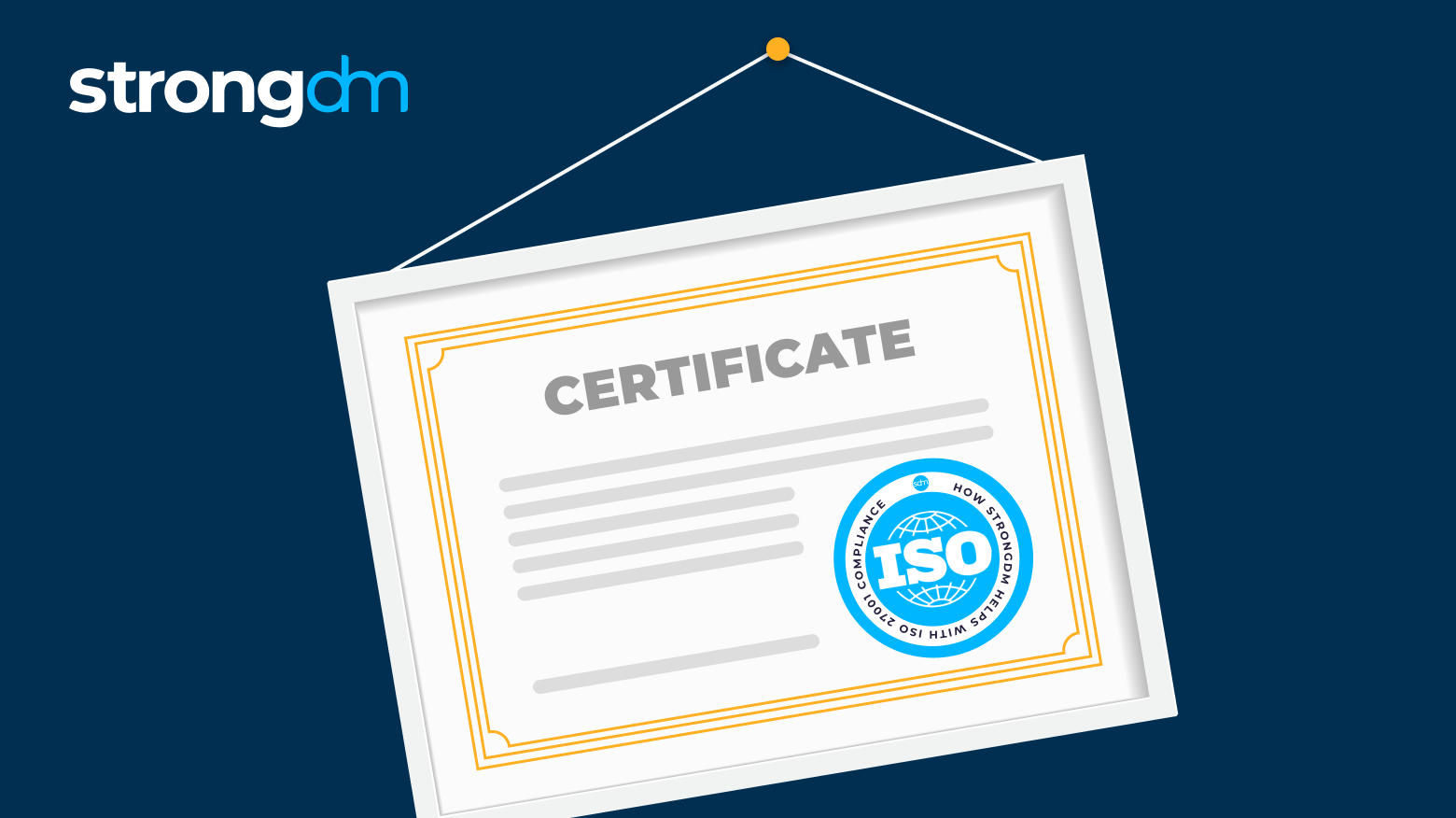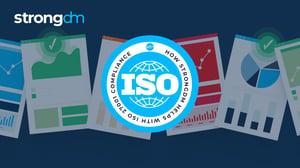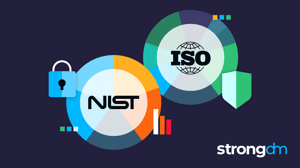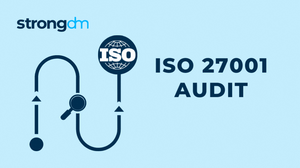How to Maintain ISO 27001 Certification in 2026 and Beyond


Written by
John MartinezLast updated on:
October 17, 2025Reading time:
Contents
Built for Security. Loved by Devs.
- Free Trial — No Credit Card Needed
- Full Access to All Features
- Trusted by the Fortune 100, early startups, and everyone in between
Summary: This article examines what happens after companies achieve IT security ISO 27001 certification. We’ll answer questions about how to maintain ISO certification, how long ISO 27001 certification is valid, and the costs and risks of failing to maintain compliance. By the end of this article, you’ll know the certifying body requirements and what your checklist should look like for staying on top of your ISO 27001 certification.
How to Maintain ISO Certification
Businesses maintain ISO certification by completing process updates, conducting regular internal audits, and passing annual external audits throughout each three-year certification cycle. Certifying bodies ask organizations to demonstrate continued efforts to secure their information security management system (ISMS).
So, how long does ISO 27001 certification last? Organizations need to undergo ISO 27001 certification renewal every three years. Teams must review compliance controls and develop new ones to handle emerging risks as their company grows. Ongoing auditing to maintain international ISO 27001 standards helps companies prepare for recertification.
ISO 27001 policy requirements include internal and external security audits throughout the ISO 27001 certification validity period. As organization leaders learn ISO 27001 and how to become ISO 27001 compliant, they will also schedule regular training to ensure employees understand the rules. Management review of internal audits and remediation efforts is another component of the continual improvement process that organizations must demonstrate as the business evolves.
Risks of Failing to Maintain Your ISO Certification
Failing to maintain ISO 27001 certification exposes a company to hacking and other risks that result from lax security processes. Cybercrime is a fundamental threat to decentralized organizations today, costing companies an average of $4.24 million per breach. This issue is increasingly on the minds of corporate boards as a top priority. ISO 27001 compliance reassures leadership and customers alike that a company is staying on top of ongoing threats.
Even if a company does not fall victim to a breach, failing to maintain compliance can slow business growth when clients and partners opt to work with an ISO 27001-certified organization instead. Security enhances user trust, and customers are 49% more likely to buy, or buy more, from trusted companies. Demonstrating responsible data practices contributes to business growth.
ISO 27001 best practices create a culture of security
Who needs ISO 27001 certification? While certification isn’t necessary to conduct business, going through the process comes with core cultural benefits. For one, ISO 27001-compliant organizations have the advantage of cultivating a culture of cybersecurity. They’ve already
- Documented the scope of their ISMS
- Developed internal controls
- Assigned security roles
- Trained employees on security practices
- Developed employee experts and advocates for security
With lapsed certification, those gains evaporate. Critical knowledge trickles from the organization, and accountability for security practices can also disintegrate. ISO 27001-required documents give organizations tangible assets to underscore their ongoing cultural advantage.
How Much Does It Cost to Maintain ISO Certification?
ISO 27001 costs can total up to $75,000 just to prepare for an initial certification audit. But the costs don’t end there. Ongoing maintenance costs will include
- Internal annual audits ($7,500)
- An external annual audit ($7,500)
- Annual training ($1,000)
Additional costs vary by company but may include
- New tools: Ongoing analyses of processes and gaps can require organizations to adopt software to fill a new need. Software licensing for authentication, encryption, and monitoring can cost $5,000 annually.
- Security testing: Vulnerability assessments and penetration tests can also be part of a company’s regular maintenance, costing roughly $7,000 to $20,000 for both.
- Labor dedicated to compliance: Writing policies, implementing controls, and testing security takes time away from other business tasks. Engineering and IT teams, but also HR and legal expertise, are necessary. Internal audits can also take employees away from their typical business tasks to focus on compliance, causing labor costs to accrue. A full-time compliance or implementation lead can cost $90,000 annually.
Learn more about ISO 27001 Certification Cost.
Is ISO 27001 expensive?
The value of ISO 27001 certification is high, but the costs associated with ISO 27001 audit requirements can be substantial, too. Some factors that contribute to maintenance costs include
- The complexity of an ISMS system
- The number of employees in an organization
- The certification organization a company uses and the costs associated with its services and the required documentation
- A company’s choice to use in-house resources and tools or hire experts to help at every step
How can you keep costs in check? Consider automating as many controls as possible with a single source of truth that makes the audit process fast and transparent.
How StrongDM Makes Maintaining Your ISO Certification Easy
Implementing an initial ISO 27001 certification process includes controls from 14 categories, from access control to communications security. The process is more straightforward with a checklist that assures an organization's IT leaders that they’re on track for upcoming audits. But it’s easiest with one platform that can execute controls and streamline the audit process.
StrongDM’s platform builds in authentication best practices so you can enforce your controls and see the results at a glance. With StrongDM, you can
- Authenticate users and keep outsiders away from your secure infrastructure
- Enforce role-based access rules seamlessly
- Generate logs and audits for visibility across your stack and faster audit times
- Detect and terminate problematic log-ins in real time
Controlling and maintaining an ISMS
ISO 27001 uses a process-based approach, recognizing that it’s an ongoing job to monitor and improve ISMS security. That’s especially true as technologies, and their associated risks, advance rapidly. Companies that maintain an ISMS ISO system must look ahead to future potential threats and develop controls to manage them, even as they juggle today’s tasks and risks.
An ISO-compliant organization identifies, assesses, monitors, and mitigates risks ongoingly. When technologies handle these processes, there’s less room for error. For example, StrongDM handles access to infrastructure and monitoring across cloud providers, providing a high-level overview of an increasingly dynamic stack. As businesses add complexity, StrongDM captures critical data and logs incident investigations. Companies meet compliance requirements, even as they meet new risks.
ISO Certification Maintenance: Frequently Asked Questions
How long are ISO 27001 certificates valid?
ISO 27001 certifications are valid for three years. However, organizations must perform compliance activities, such as multiple internal and yearly surveillance audits, or risk losing their certification.
How often do you need to renew ISO 27001?
Yearly surveillance visits culminate in three-year renewal audits. An accredited certification body issues ISO 27001 certification every three years.
Can you lose ISO certification?
Organizations can lose certification. Because being ISO 27001 compliant is contingent on maintaining the standards, failure to make continual adjustments following ISO 27001 annual audits can prompt a certification body to revoke an organization’s certificate. Typically, this involves an audit non-conformance that a company does not address.
Is ISO 27001 expensive?
Initial certification preparation and audit costs can total between $10,000 and $85,000, depending on an organization’s size and security needs. Maintaining ISO 27001 compliance is a way to protect that investment. ISO 27001 audit costs (internal and external auditing) total roughly $15,000 annually. Organizations must also budget for any tools or testing to provide security for new business needs, and $1,000 for annual employee training.
Streamline Compliance with StrongDM
Keeping track of security tasks manually is difficult, so tasks often fall through the cracks or don’t get monitored and logged for future audits. That leaves organizations on the hook for non-conformances at audit time. StrongDM’s Zero Trust Privileged Access Management (PAM) solution helps automate security processes, so organizations stay compliant, no matter what. Comprehensive audit logs answer the who, what, where, and when across your entire infrastructure, enabling IT teams to spend more time on core business tasks. Evidence collection happens on autopilot. It all means better compliance in less time.
Ready for hands-off compliance? Sign up for a free 14-day trial of StrongDM today.
Next Steps
StrongDM unifies access management across databases, servers, clusters, and more—for IT, security, and DevOps teams.
- Learn how StrongDM works
- Book a personalized demo
- Start your free StrongDM trial

Categories:

About the Author
John Martinez, Technical Evangelist, has had a long 30+ year career in systems engineering and architecture, but has spent the last 13+ years working on the Cloud, and specifically, Cloud Security. He's currently the Technical Evangelist at StrongDM, taking the message of Zero Trust Privileged Access Management (PAM) to the world. As a practitioner, he architected and created cloud automation, DevOps, and security and compliance solutions at Netflix and Adobe. He worked closely with customers at Evident.io, where he was telling the world about how cloud security should be done at conferences, meetups and customer sessions. Before coming to StrongDM, he lead an innovations and solutions team at Palo Alto Networks, working across many of the company's security products.
You May Also Like
![Understanding ISO 27001 Controls [Guide to Annex A]](https://discover.strongdm.com/hs-fs/hubfs/iso-27001-controls.jpg?width=300&height=168&name=iso-27001-controls.jpg)



